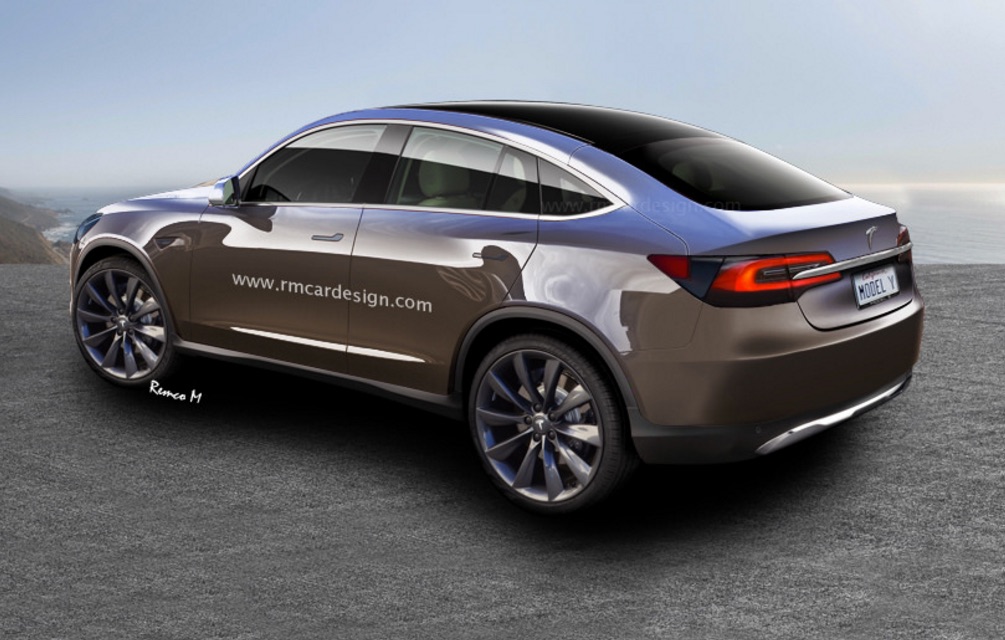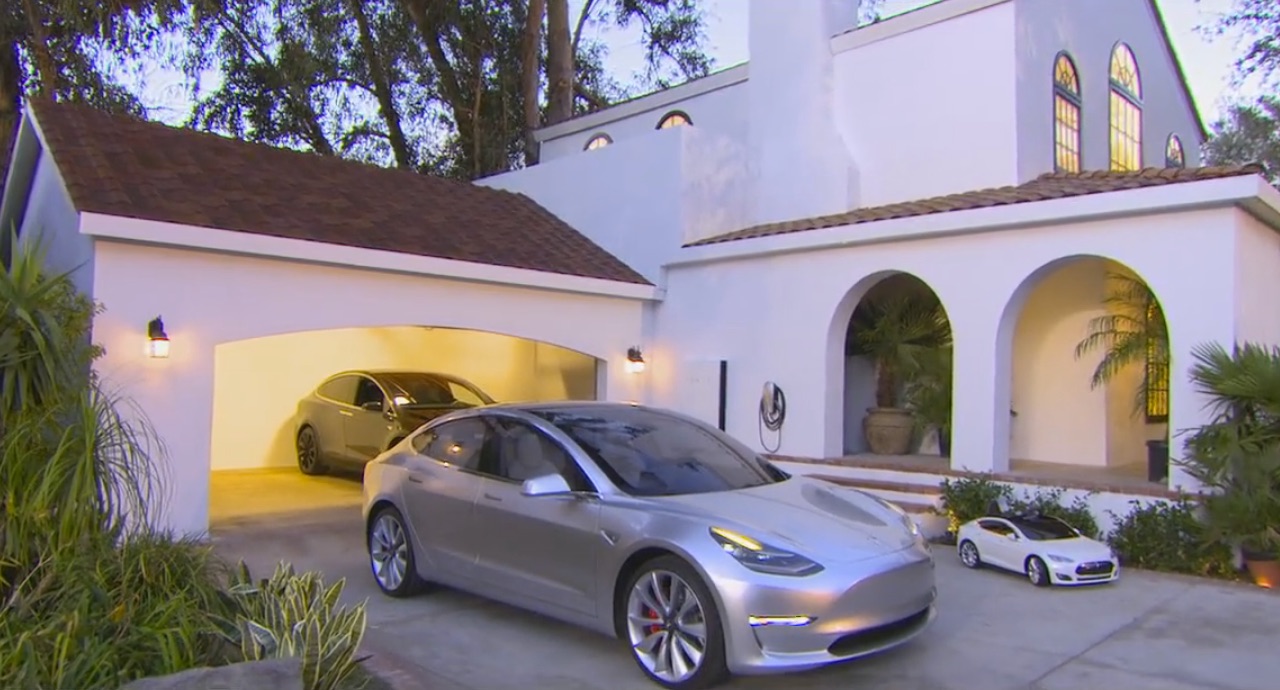News
What Tesla has in store for 2017: Model 3, Model Y, Solar Roof and more
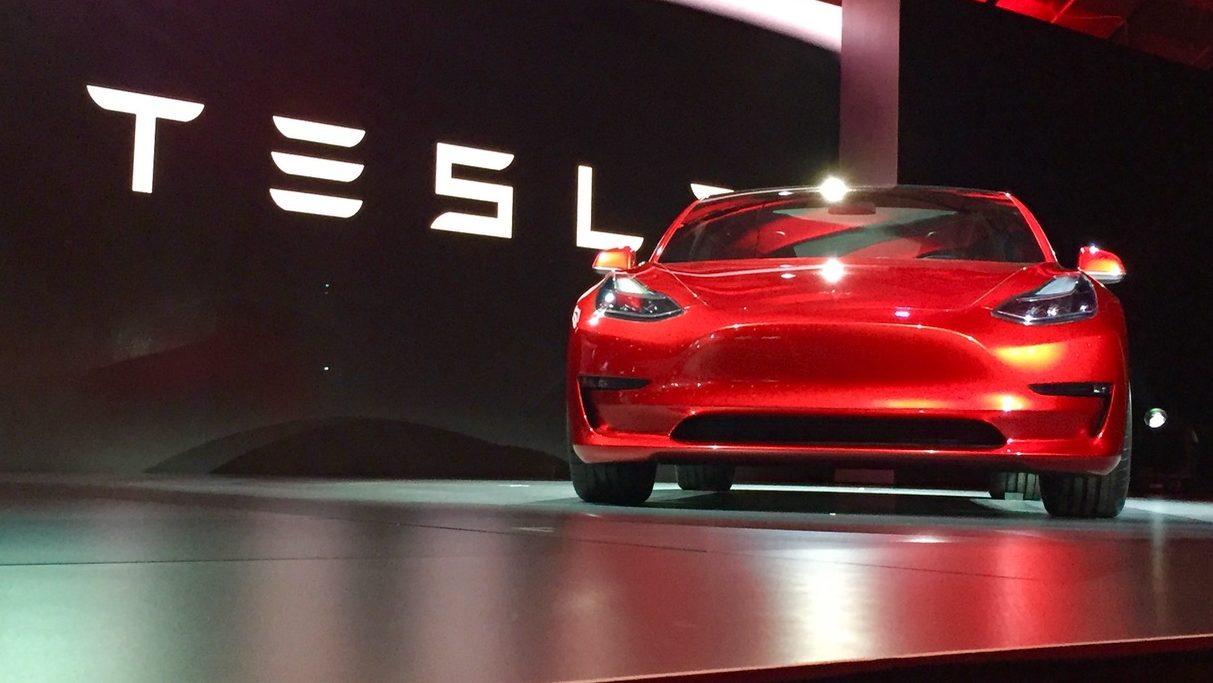
Tesla CEO Elon Musk revealed his vision of the future through the company’s Master Plan Part Deux on July 20, 2016. Filled with predictions about his complex and detailed plan to marry self-driving electric vehicles covering all segments, with solar rooftops and integrated battery storage units, 2017 should be the year when many of them begin to come into focus in a way the public can visualize.
Tesla Model 3 Deliveries
Arguably the most anticipated product on Tesla’s roadmap is its affordable mass market Model 3 mid-size sedan which will see first deliveries take place at the end of 2017. The car has been in “pencils down mode” since summer, meaning the final design has been locked in and the process of getting it ready for production has begun. Elon has hinted that plans call for a volume production date that would begin sometime near the summer of 2017.
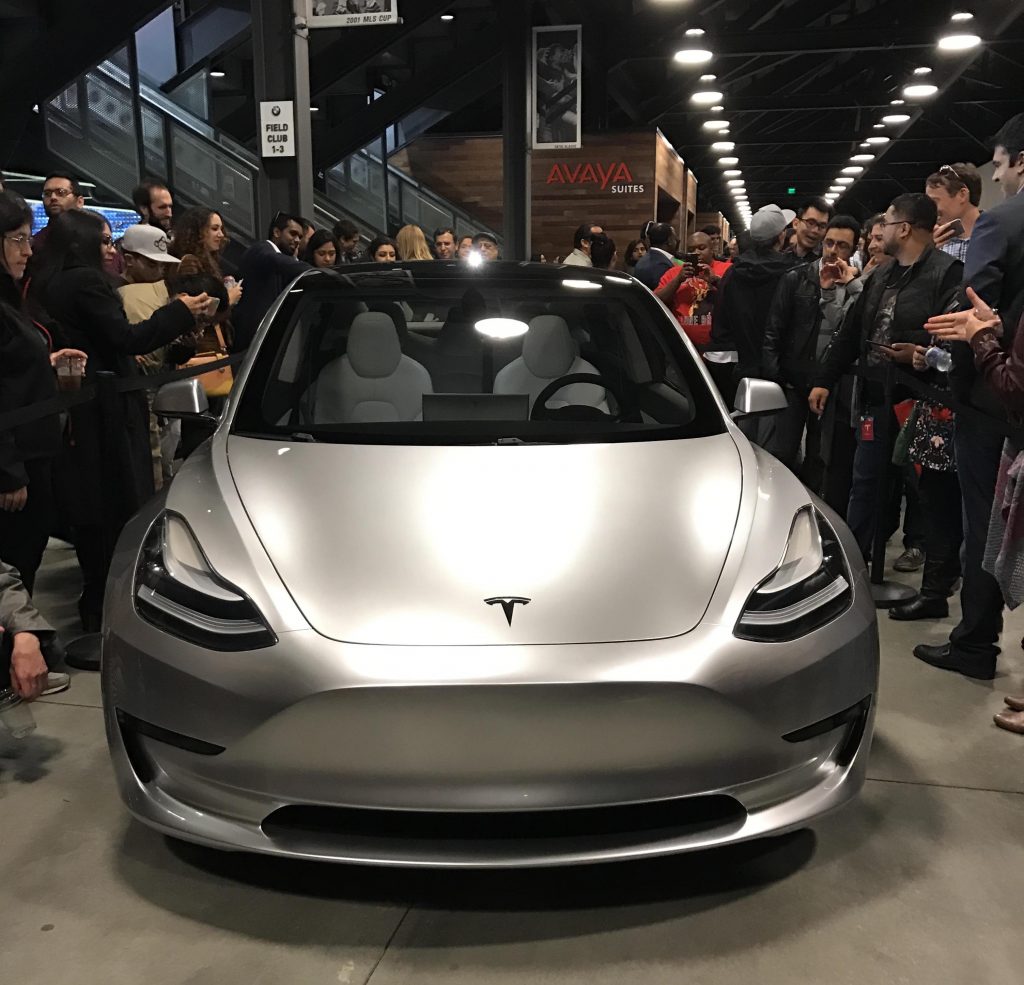
Silver Model 3 seen at Tesla’s employee-only Q3 celebration party in San Jose, CA
Goals should always exceed one’s grasp and Musk recognizes that starting volume production on Model 3 by the end of July is going to be next to impossible. He was chastened a bit by the roll out of the Model X, which began in September, 2015. A number of production glitches delayed full production of that car until well into the second quarter of 2016.
That experience tempered Elon’s irrepressible optimism with a dose of real world experience. Even assuming production did begin next summer, it would result in relatively few cars being produced. Those would get into the hands of customers living near the factory in Fremont, California so that any post-production issues can be addressed quickly and efficiently. The lessons learned would then be used to improve the quality of the cars to come.
Machines That Builds Machines, Come to Life
A main area of focus for Musk and Tesla’s production arm is devising ways to reap significant benefits from a total rethinking of the manufacturing process by “building the machine that builds the machine”. Having recently acquired a leading engineering firm in Germany focused on building advanced automation tools, Tesla believes that a properly designed factory could operate at 5 to 10 times the speed of today’s production facilities.
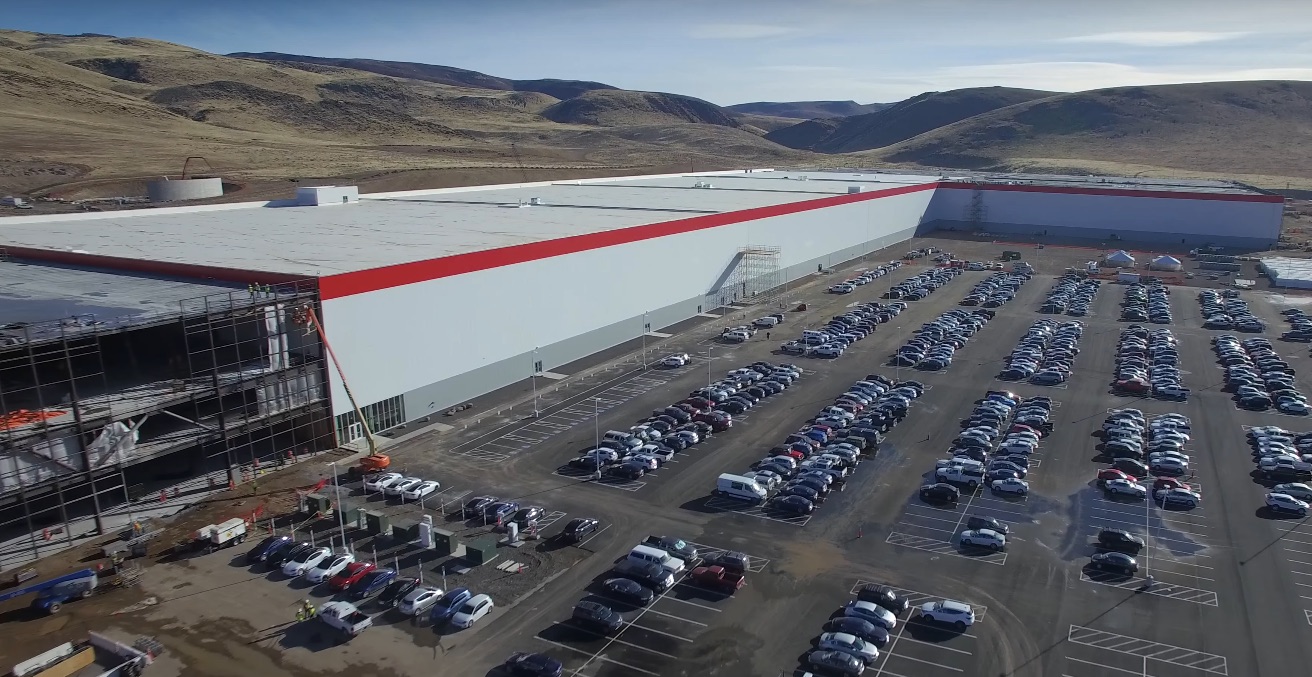
Drone video of Tesla’s Gigafactory shows the battery factory more than doubling in size
“Tesla engineering has transitioned to focus heavily on designing the machine that makes the machine — turning the factory itself into a product. A first principles physics analysis of automotive production suggests that somewhere between a 5 to 10 fold improvement is achievable by version 3 on a roughly 2 year iteration cycle.”, said Musk at the Tesla Gigafactory Grand Opening celebration.
Plans to nearly double the size of Tesla’s Fremont, Calif. factory were recently approved by the city. Tesla plans to build as many as 500,000 cars a year, most of them Model 3s, by the end of 2018.
Tesla Model Y Compact SUV and Tesla Pickup Truck Unveiling
An electric compact SUV based on the Model 3 chassis, dubbed Model Y, will round out Tesla’s S-E-X-Y range of vehicles. That, along with a Tesla pickup and a Tesla ‘minibus’, will fulfill the major automotive segments the Silicon Valley automaker and energy company aims to cover with its upcoming fleet of electric cars. Expect prototypes to be unveiled sometime in 2017
“In addition to consumer vehicles, there are two other types of electric vehicle needed: heavy-duty trucks and high passenger-density urban transport. Both are in the early stages of development at Tesla and should be ready for unveiling next year.”, reads Tesla’s blog post.
Musk also says Tesla is already working on a semi-truck for hauling. Heavy trucks account for about 50% of the emissions from transportation. With Musk’s focus on creating a sustainable society, trucks will need to be big part of the picture. Both the pickup truck and the Tesla Semi are expected to be revealed in concept form during the coming year.Model Y (compact SUV) off Model 3 chassis. Tesla Bus/Minibus/Spacebus off Model X.
— Elon Musk (@elonmusk) July 31, 2016
In addition, Tesla is thinking about creating a self driving minibus that could transport up to 10 passengers, according to Musk’s Master Plan Part Deux. It would be based on the Model X chassis. Passengers could summon the bus to their location and it would deliver them to their destination with little or no walking required — something traditional public transportation vehicles cannot do.
Tesla job openings reveal that developments for future vehicles are already being planned for.
Roll Out of Autopilot 2.0 and Self-Driving Features
2017 is also the year when Tesla’s Enhanced Autopilot should become fully operational. All cars produced after October 19 are equipped with the hardware 2 package of cameras, radar, and advanced ultrasound sensors that will allow them to operate without human input. All that remains to be done is accumulate enough human logged driving miles to flush out the confidence level for the company’s self-driving algorithms.
Tesla has already accumulated more than 1.2 billion miles of driving history and is adding 3 million more miles every day. Elon believes it will require a total of 6 billion miles of driving experience before autonomous driving is reliable enough to convince regulators to allow self-driving cars to be allowed on public roads. He is also aware that approval will vary widely from jurisdiction to jurisdiction, both within the United States and in other countries.
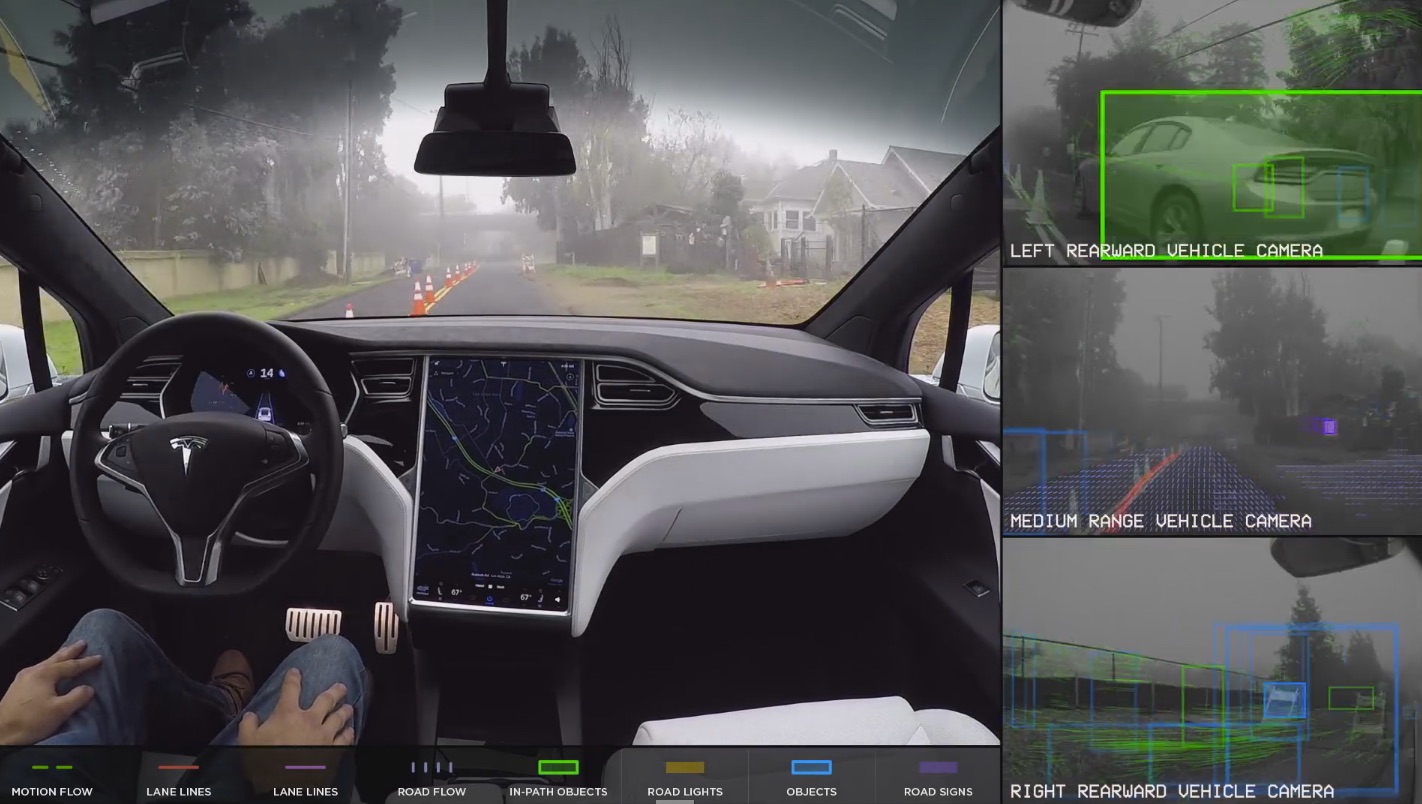
Tesla demonstrates the capabilities of a Full Self-Driving Model X
Musk plans to showcase a fully autonomous trip from Los Angeles to New York by the end of 2017. According to Musk, the cross country journey in a Full Self-Driving Tesla would take place “without the need for a single touch” from a human driver, including recharging the car’s battery.
“Our goal is, we’ll to be able to do a demonstration drive of full autonomy all the way from LA to New York,” According to Musk, the trip would be “from home in LA, to dropping you off in Times Square, and then the car will go park itself.”
Tesla Will Begin Solar Roof Sales
Now that SolarCity has officially become part of Tesla Motors, the Solar Roof products introduced in October will become available next year to customers throughout the US. Tesla is revamping its retail stores to include information about its solar products and the Powerwall 2, its latest residential energy storage product. Musk envisions a seamless, pain-free process that will allow solar customers to order a Solar Roof and all the details are handled completely by Tesla.
Combining energy production with local energy storage will permit more homeowners to reduce their reliance on the local utility company, which will insulate them against future rate hikes. It will also mean fewer carbon emissions from generating electricity, reinforcing Musk’s goal of a sustainable future.
The Solar Roof will be offered in four styles and the anticipated to go on sale during the summer of 2017, starting with the most popular style first. Other styles will become available at the rate of one additional style every three months.

News
Tesla contract with Baltimore paused after city ‘decided to go in a different direction’
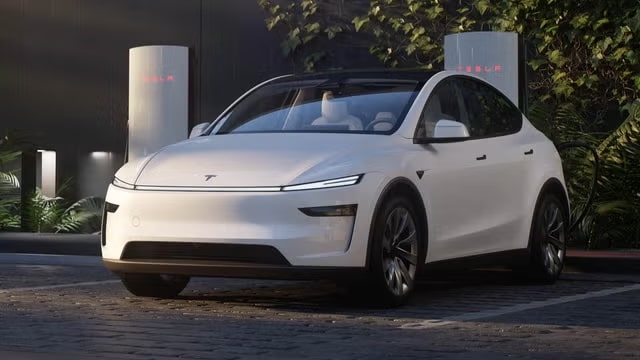
Last Summer, Tesla landed a $5 million contract with the City of Baltimore for a fleet of electric vehicles for the local government. However, Mayor Brandon Scott decided to pause that investment in September after the City “decided to go in a different direction.”
This is according to John Riggin, spokesman for the city’s Department of General Services. Riggin confirmed that the contract with Tesla has not been fulfilled, and Baltimore is going with other options for the time being:
“No Tesla units have been ordered, and none are in the City’s fleet.”
It now seems that the contract, which was set to be run until 2027, is not really a typical “contract” in the sense of the word. Riggin said the city is not obligated to spend the money for vehicles from Tesla, and that it is evaluating offerings from a variety of OEMs, including Ford and General Motors.
Tesla chosen over Ford for $5 million Baltimore City EV fleet
Riggin said the value of the contract is more of a ceiling and not necessarily an obligation to spend the committed amount in full.
The contract has not been canceled officially, but City Comptroller Bill Henry said to the Baltimore Sun that it has gone back to purchasing Mustang Mach-Es from Ford, the vehicle that was snubbed for Teslas back in July when things were initially decided.
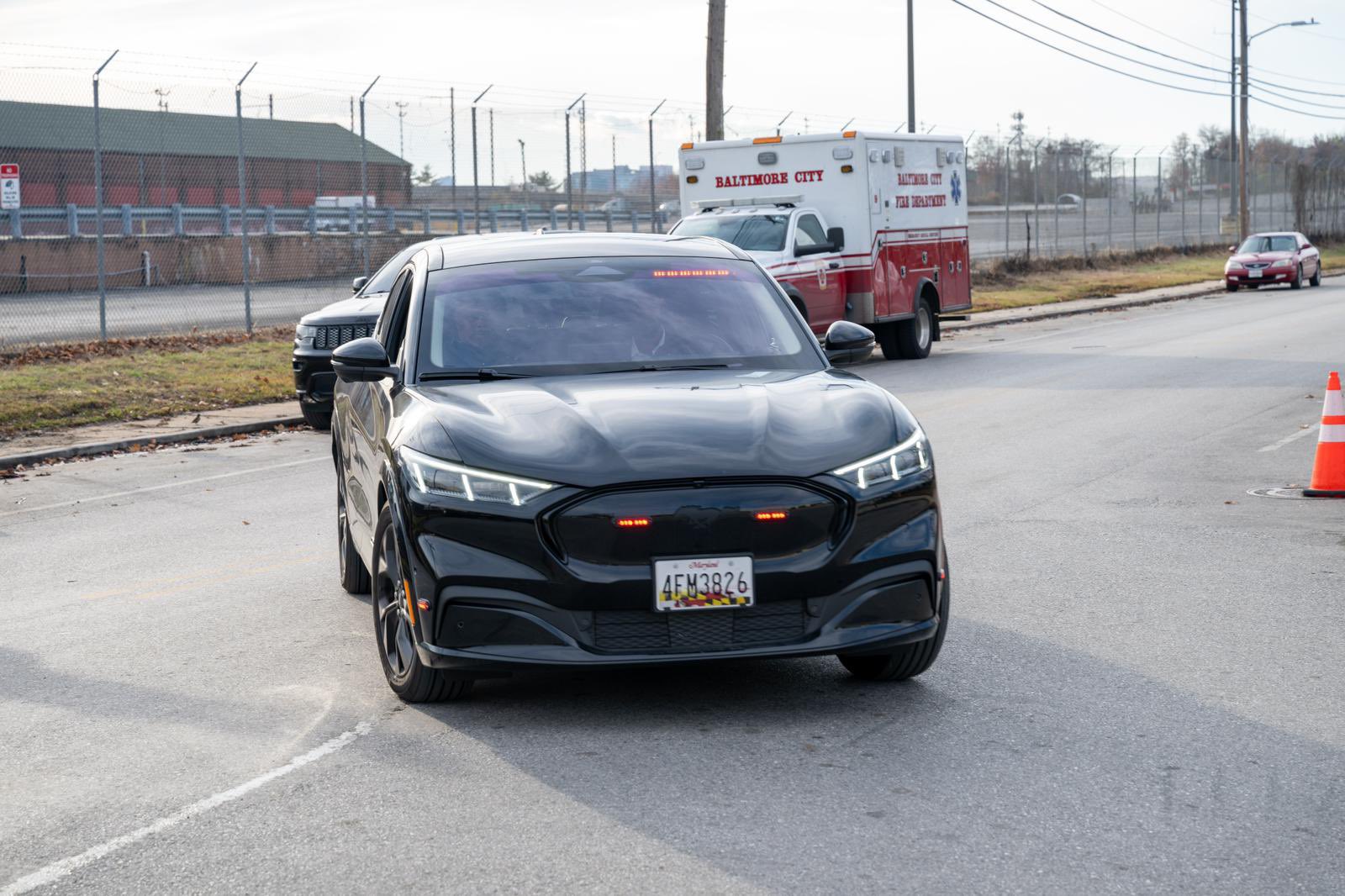
The timing of the pause is interesting, and it does not seem to have anything to do with CEO Elon Musk’s direct involvement with the Trump administration, although the EV maker’s frontman was already vocalizing his distaste for the Democratic White House run by the Biden Administration.
Baltimore has a citywide goal of achieving carbon neutrality by 2045, and has used EVs in its fleet for several years to reach that goal. It plans to electrify the city vehicle fleet by 2030.
News
Tesla at risk of 95% crash, claims billionaire hedge fund manager
Tesla stock has been extremely volatile as of late amidst souring sentiments over CEO Elon Musk’s political leanings.
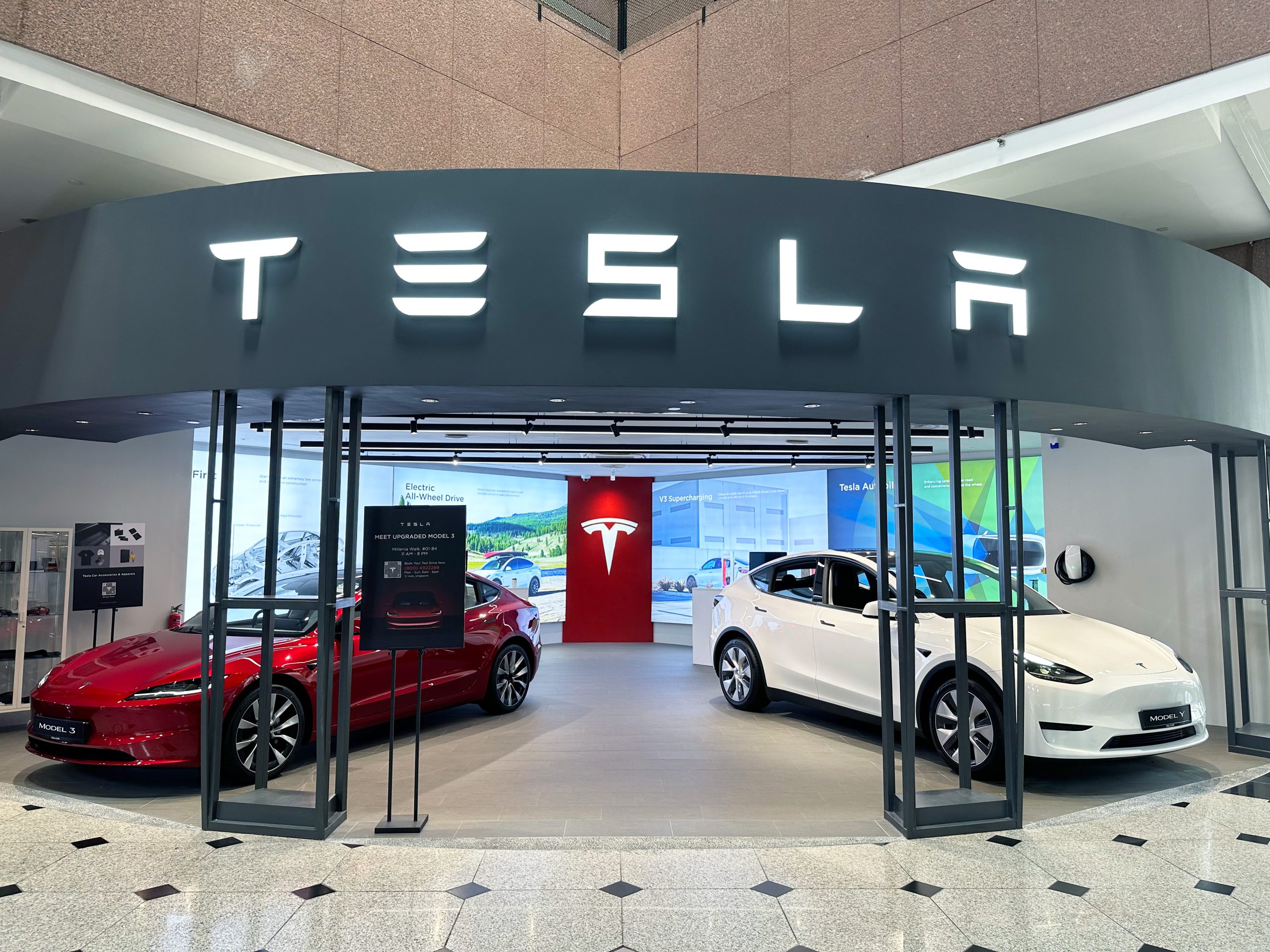
Christer Gardell, a Swedish billionaire and hedge fund manager, issued a stark warning about Tesla stock and what he believes are bubbles in the stock market. The billionaire’s insights about Tesla were shared during an interview with EFN.
Tesla stock has been extremely volatile as of late amidst controversies and souring sentiments over CEO Elon Musk’s increasingly political leanings.
Alleged Tesla (TSLA) risks
Gardell did not mince words about Tesla, stating that the electric vehicle maker’s valuation could drop as much as 95% due to the “circus” surrounding its CEO.
“Tesla, especially now with the whole Musk circus going on everywhere, is probably the most expensive stock on the global stock exchanges right now. It could go down 95% – and maybe it should go down 95%,” he said in the interview.
The Swedish billionaire sees Tesla as fundamentally a car company. Thus, he does not understand why the market has given the EV maker such a high value. For context, the Tesla story has been changing in recent years, with the company growing its energy business and delving into AI and robotics.
Gardell Slams “Eternal Bubble“
Gardell believes the EV maker has become a poster child of sorts of a market that has become speculative, where share prices do not reflect true valuations anymore, as noted in a CarUp report. The hedge fund manager noted that in Tesla’s case, this “eternal bubble” should have burst long ago.
“I have commented that it should have burst over the past five years, but it still hasn’t. The valuation is incomprehensible,” he explained. The hedge fund manager, however, noted that once the crash happens, the decline would be dramatic.
“It’s always hard to say when. It could happen in a month, six months, a year, three years, or five years – it’s impossible to answer. Because there’s so much money dominating the stock market now, and they don’t care about the value of the shares, they speculate on price movements,” he said.
U.S. Stocks Overpriced, Europe Offers Value
Looking beyond Tesla, Gardell flagged broader risks in the U.S. stock market, which he described as significantly overvalued. “American stocks have received very large flows recently. If you look at the American stock market, it is very expensive, both from a purely absolute perspective and from a historical perspective,” he stated.
In contrast, Gardell touted European stocks as a more attractive option for investors. “And the difference between American stocks and European stocks has never been greater. Normally, European stocks have had a discount of 20%, now it is 40%. And that is too high,” he noted.
News
Tesla store shooting incident under investigation
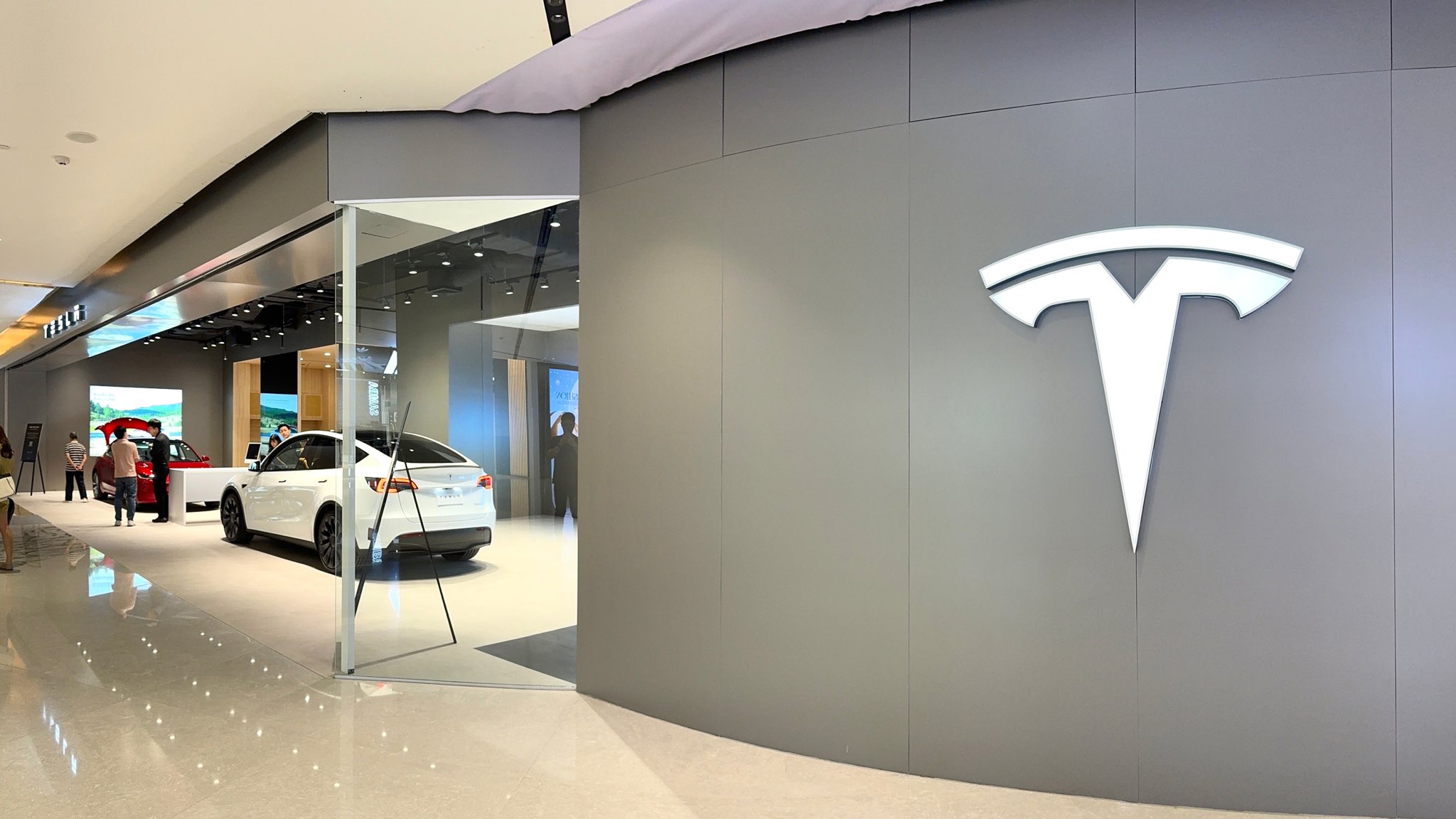
Oregon police are investigating a shooting incident involving a Tesla store.
A Tesla store in Tigard, a city southwest of Portland, was vandalized around 2:00 am on Thursday, March 6.
“The damage was discovered by employees who arrived for work this morning (3/6/25) at the dealership on SW Cascade Avenue. Investigators believe at least 7 shots were fired, damaging 3 cars and shattering windows. One bullet went through an office wall and into a computer monitor. Fortunately, this happened overnight when the property was unoccupied,” stated a Tigard Police report.
Crime scene technicians and investigators are gathering physical and video evidence of the shooting. Tigard Police did not officially announce a motivation for the shooting at the Tesla store. However, they acknowledge that a few Tesla locations have been targeted across Oregon and the nation.
Tesla locations across the United States and abroad have been experiencing attacks recently. Most of the company’s locations experience arson attacks. For instance, in France, around a dozen Tesla vehicles were reportedly torched in a suburb near Toulouse. Meanwhile, in Massachusetts, a few Tesla Superchargers were allegedly set on fire near a shopping center. Tesla protests have also started in various locations.
Police have not provided an official reason or motivation for all the arson attacks and the Oregon shooting because they are still under investigation. However, Elon Musk is definitely at the root of the matter.
Elon Musk has recently found himself the target of plenty of ire in the United States and Europe. Tesla is taking the brunt of all the anger pointed toward Musk.
-
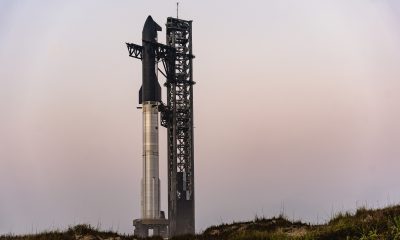
 News4 days ago
News4 days agoSpaceX announces Starship Flight 8’s new target date
-
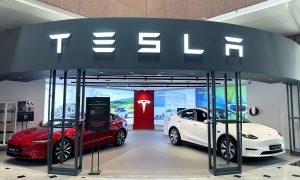
 News2 days ago
News2 days agoTesla at risk of 95% crash, claims billionaire hedge fund manager
-
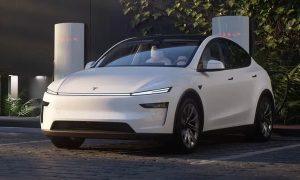
 News2 days ago
News2 days agoTesla contract with Baltimore paused after city ‘decided to go in a different direction’
-

 News5 days ago
News5 days agoTesla launches fresh U.S. promotions for the Model 3
-
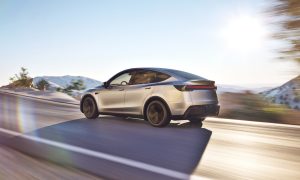
 Elon Musk6 days ago
Elon Musk6 days agoTesla mulls adding a new feature to fight off vandals as anti-Musk protests increase
-
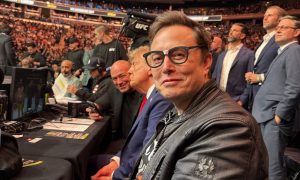
 Elon Musk3 days ago
Elon Musk3 days agoTesla UK sales up over 20% despite Elon Musk backlash
-
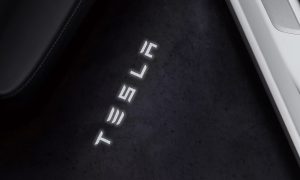
 News4 days ago
News4 days agoOne dozen Teslas burn in arson attack in France, investigation underway
-
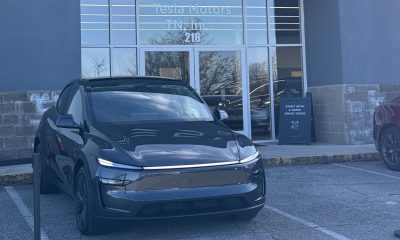
 News6 days ago
News6 days agoTesla starts Model Y ‘Launch Edition’ deliveries in the U.S.
